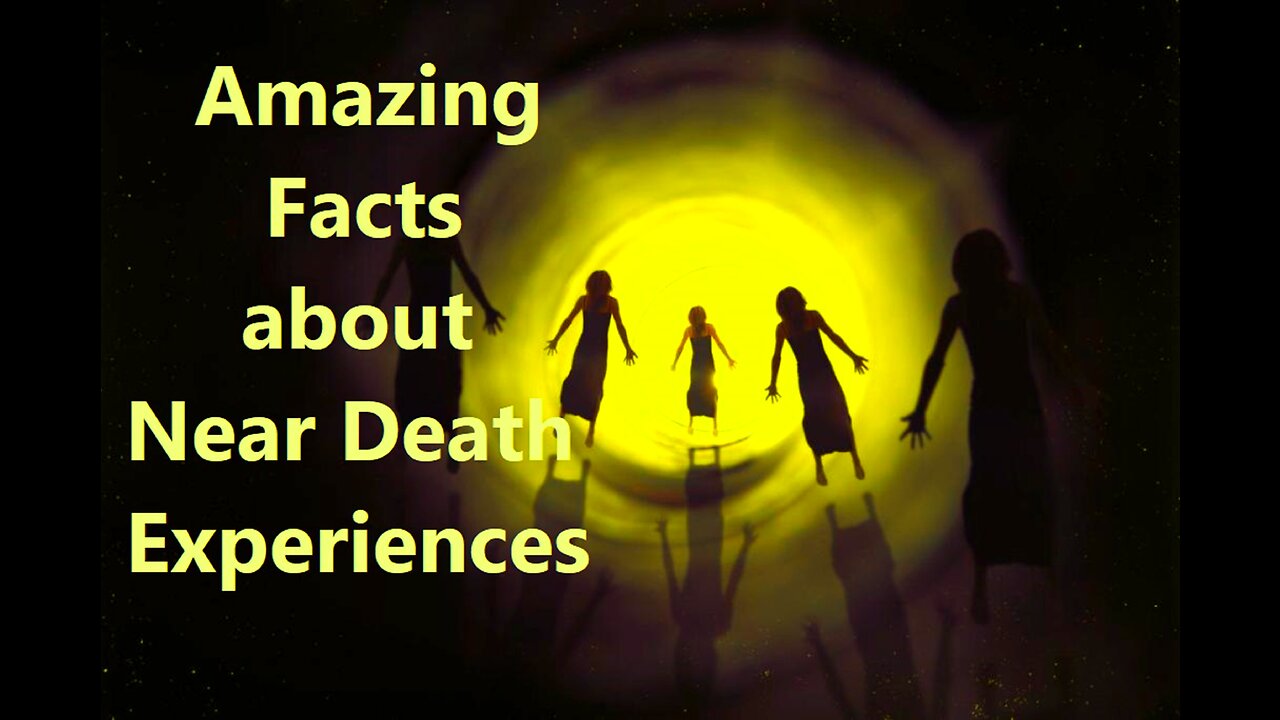Premium Only Content

Amazing Facts about Near Death Experiences
Near-death experiences (NDEs) are intriguing and often deeply personal accounts reported by individuals who have come close to death. While the nature and interpretation of NDEs can vary widely, here are some fascinating and thought-provoking facts about them:
Common Elements: NDEs often share common elements, including feelings of peace and serenity, an out-of-body experience (OBE), moving through a tunnel, encountering deceased loved ones, and a life review.
Scientific Interest: Researchers have been studying NDEs for decades. They are often explored by neuroscientists, psychologists, and parapsychologists to better understand the phenomenon.
Cross-Cultural Phenomenon: NDEs have been reported across cultures and religions, suggesting that the experience may be a universal human phenomenon.
Atheists and Believers: NDEs are reported by individuals with a variety of belief systems, including atheists and agnostics. The interpretation of the experience can differ based on personal beliefs.
Out-of-Body Experiences: Many NDEs describe the sensation of leaving their physical body during the experience, often floating above it and observing their surroundings.
Timelessness: Some NDErs report a sense of timelessness during their experiences, where time seems to stand still or becomes irrelevant.
Life Review: A significant number of NDEs describe a life review, where they witness and sometimes feel the emotional impact of their actions throughout their lives, leading to a sense of judgment or self-assessment.
Profound Changes: Many people who have had NDEs report profound and long-lasting changes in their lives, including increased spirituality, reduced fear of death, and a greater appreciation for life.
Skepticism and Explanations: While NDEs are often attributed to metaphysical or spiritual causes, skeptics propose various physiological explanations, such as the release of endorphins, hallucinations, or altered brain function during the near-death state.
Children and NDEs: Children have reported NDEs, often with similar elements to those experienced by adults, despite their limited exposure to cultural or religious influences.
Shared NDEs: In some cases, multiple people who are near the same death event report shared NDEs, where they describe similar or overlapping experiences.
Near-Death-Like Experiences: Some individuals report near-death-like experiences during intense moments of trauma or stress, even if they haven't technically been near death. These experiences can have elements similar to NDEs.
Cultural Variations: Cultural factors can influence the interpretation and description of NDEs. For example, people from different cultures may describe meeting different types of beings during their experiences.
Scientific Challenges: Despite extensive research, the exact nature and cause of NDEs remain a subject of debate and exploration within the scientific community.
NDEs continue to be a topic of both scientific research and philosophical discussion, and they raise profound questions about the nature of consciousness, life, and the afterlife. While many find them deeply meaningful, others approach them with skepticism, emphasizing the importance of a balanced and open-minded inquiry into these remarkable experiences.
-
 1:25:45
1:25:45
Kim Iversen
12 hours agoIvermectin: The Hidden Treatment for Cancer They Don't Want You to Know About
107K145 -
 2:14:44
2:14:44
TheSaltyCracker
10 hours agoTrump Takes AXE to DC ReeEEeE Stream 02-12-25
177K245 -
 1:20:54
1:20:54
Glenn Greenwald
13 hours agoTrump, Hegseth Signal Negotiations to End Ukraine War; The Nursing Home Patients Who Run DC: With Daniel Boguslaw | SYSTEM UPDATE #406
121K58 -
 1:07:48
1:07:48
Man in America
12 hours agoGold Standard 2.0? The ECONOMIC EARTHQUAKE That Will Change EVERYTHING!
107K22 -
 2:57:15
2:57:15
I_Came_With_Fire_Podcast
12 hours agoTrump Ends Ukraine War? | FEMA Houses Migrants, Forgets Americans! | Treason In The FBI?
64.8K8 -
 1:07:44
1:07:44
Adam Does Movies
16 hours ago $5.74 earnedHow To Get A Movie Made In This New Era And Is It Worth It? - LIVE!
67.4K3 -
 55:29
55:29
Flyover Conservatives
1 day agoMEL K | We’re WINNING, But The Globalists REFUSE to Back Down—Here’s What’s Next! | FOC Show
65.7K6 -
 14:54
14:54
BlackDiamondGunsandGear
15 hours agoIs this BUDGET Optic WORTH your $$$ / Gideon Optics Advocate
42.9K2 -
 2:25:08
2:25:08
Space Ice
14 hours agoSpace Ice & Redeye: Seagal's Born To Raise Hell & Movie Ideas Feat Alex Lantz
48.4K1 -
 57:58
57:58
The StoneZONE with Roger Stone
10 hours agoCliff Maloney Defends Elon Musk as Liberal Heads EXPLODE over DOGE | The StoneZONE w/ Roger Stone
62.6K6